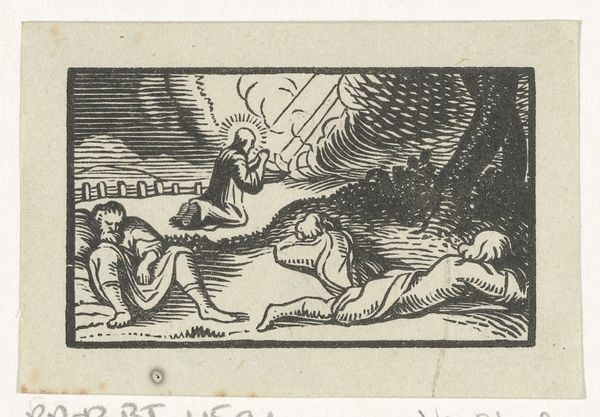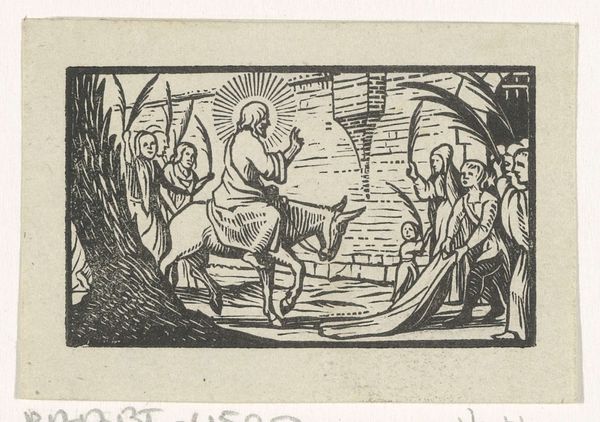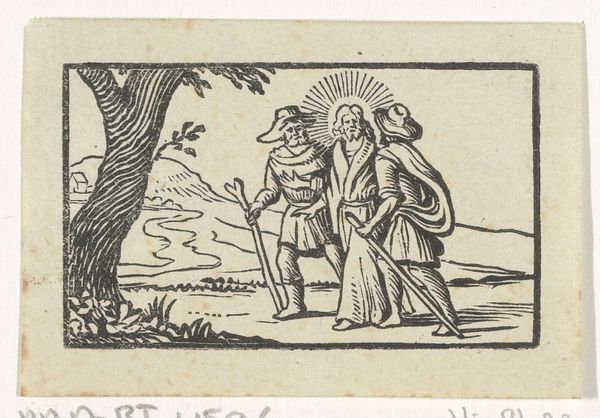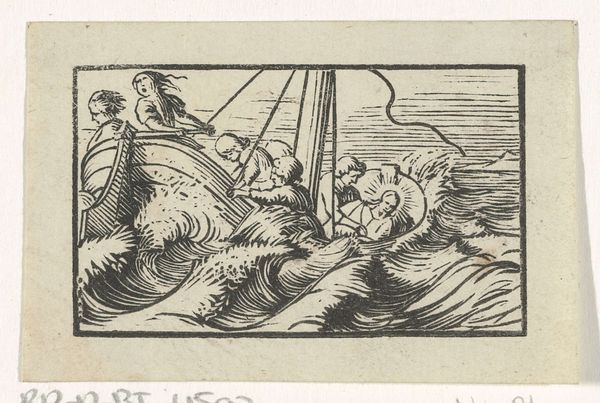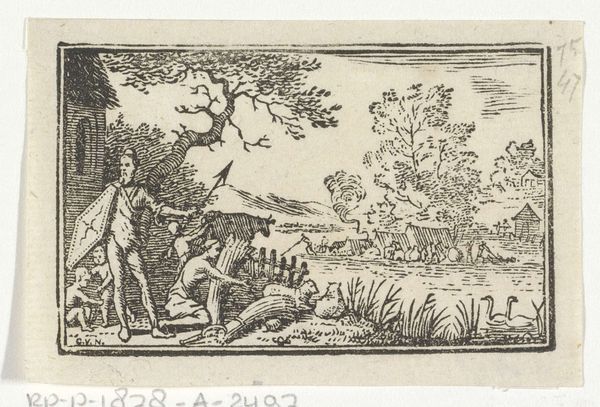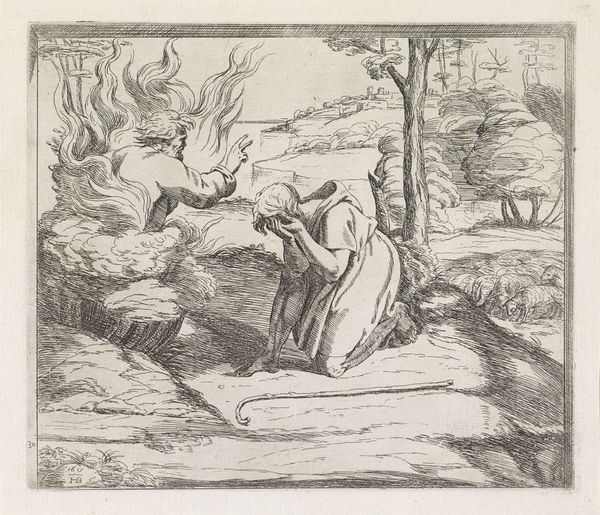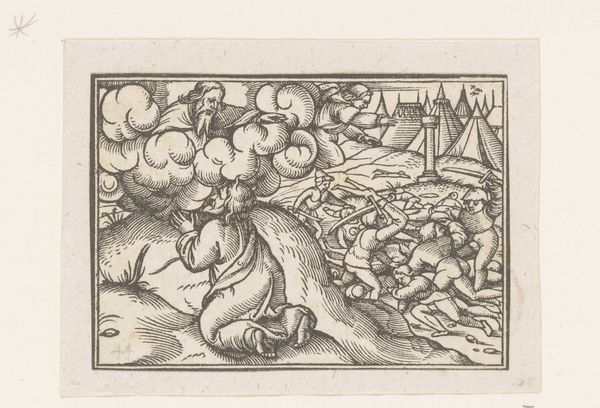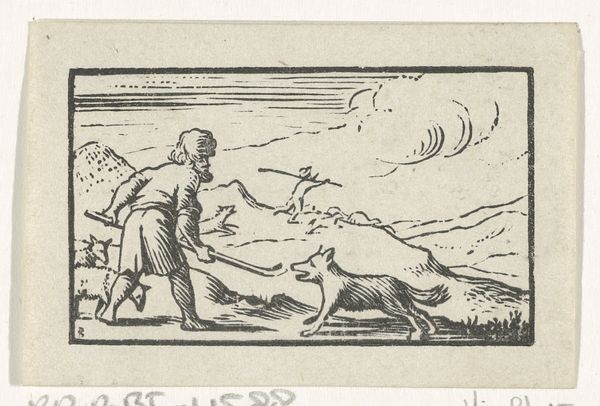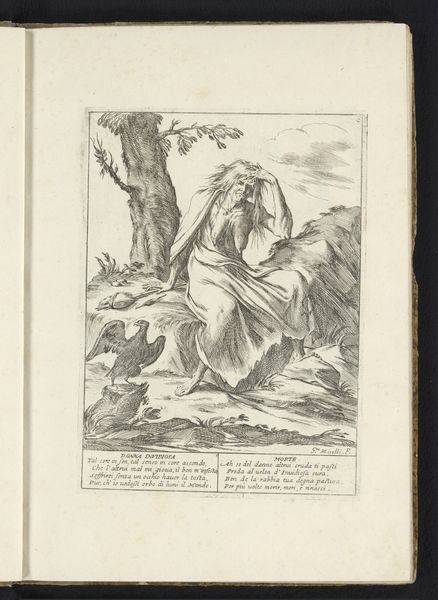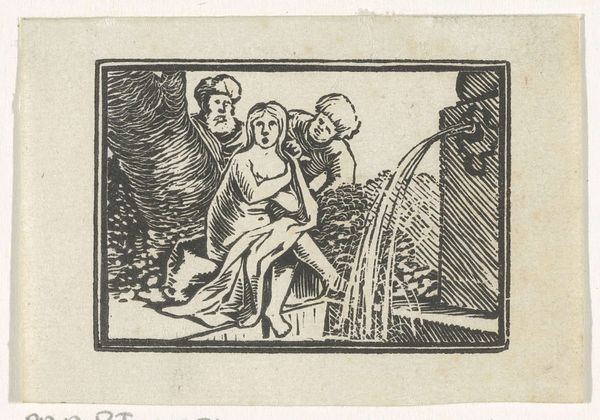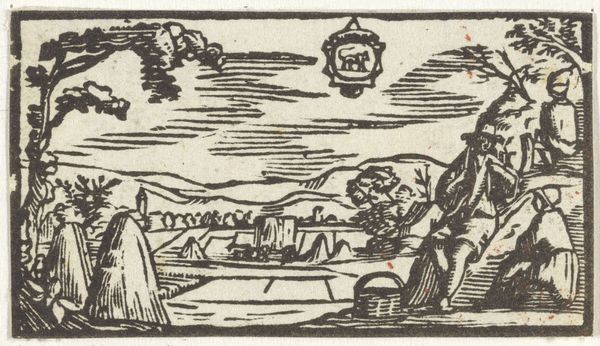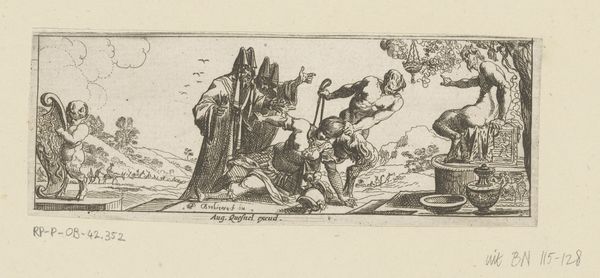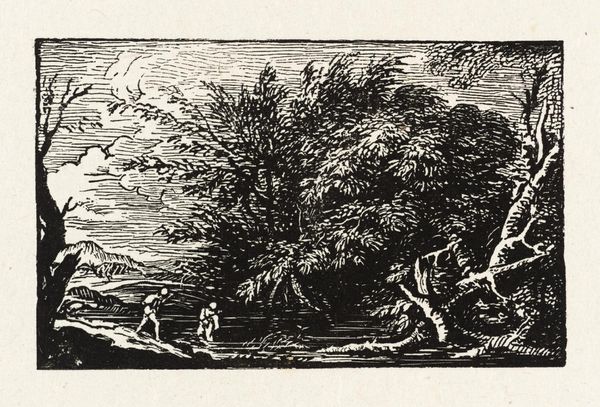
print, engraving
#
narrative-art
#
baroque
#
dutch-golden-age
# print
#
landscape
#
figuration
#
engraving
Dimensions: height 39 mm, width 64 mm
Copyright: Rijks Museum: Open Domain
Editor: Here we have Dirck de Bray's engraving, "Gelijkenis van de barmhartige Samaritaan," dating somewhere between 1635 and 1694. It’s a striking image – very graphic, literally, with its stark black and white contrast. I'm curious about the story it's telling. What do you see in this piece that I might be missing? Curator: Well, beyond the immediate biblical narrative, I see a pointed commentary on social responsibility embedded within the Dutch Golden Age context. Consider the parable itself. Why this story, at this moment? The Dutch Republic was grappling with newfound wealth and expanding global trade, yet widespread poverty persisted. The priest and Levite who pass by the injured man represent established religious and social authorities failing in their moral duty, while the Samaritan, an outsider, embodies true compassion. How does this challenge the viewer? Editor: It sounds like de Bray is asking who we consider to be our neighbors. I guess I hadn't thought about the political implications of something seemingly so straightforward. Curator: Precisely. The landscape is not just a backdrop. It’s a reminder of the world beyond the immediate scene. It begs the question: who are we leaving behind in our pursuit of prosperity? The Dutch Golden Age was built on global exchange, including exploitative colonial practices, meaning this image urges its public to look outside, as much as to consider the needs within the literal borders. Editor: So it's not just about individual charity, but a critique of the systems that create inequality in the first place? Curator: Exactly. How does the image unsettle any easy distinctions of “us” and “them”? De Bray’s image compels us to look beyond surface narratives and question the structural forces at play. Editor: This reframing gives me a lot to think about, beyond the immediate story and artistic style. I hadn’t considered that prints, particularly engravings based on Biblical stories, might have strong activist dimensions. Thank you. Curator: My pleasure, art always has something more to reveal.
Comments
No comments
Be the first to comment and join the conversation on the ultimate creative platform.
